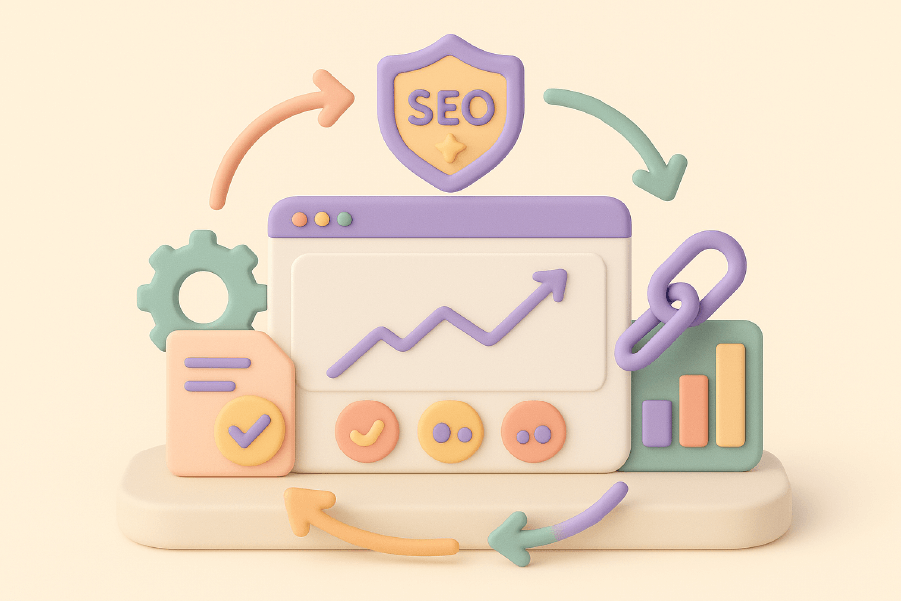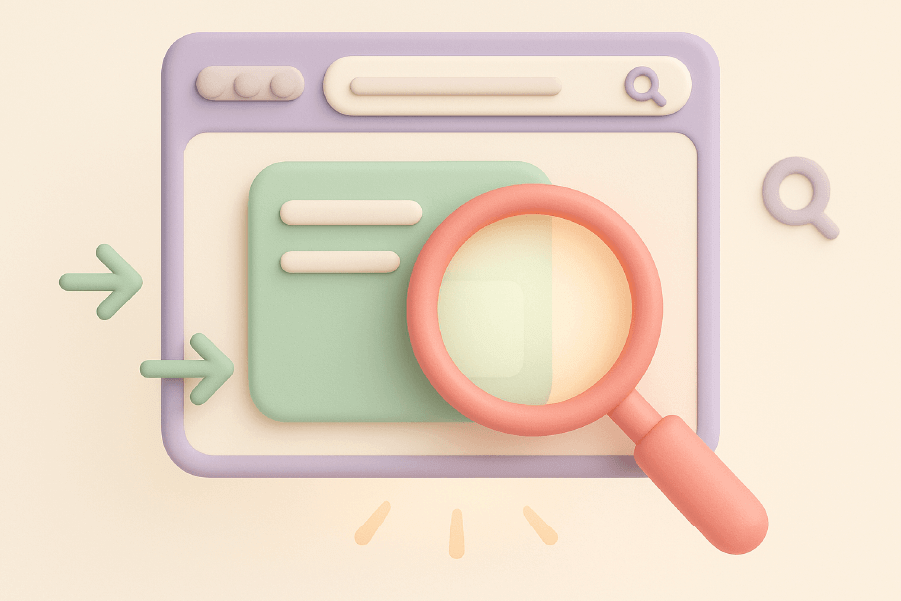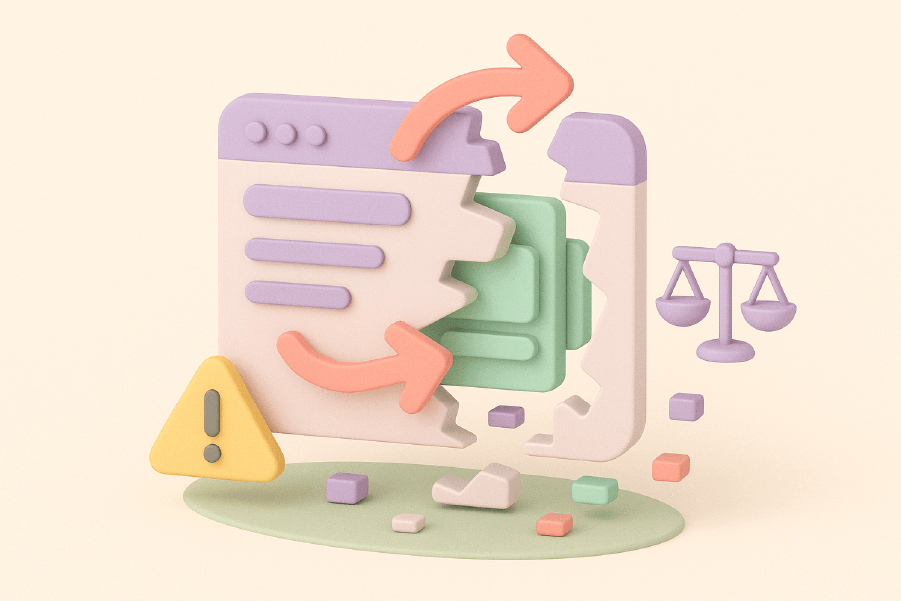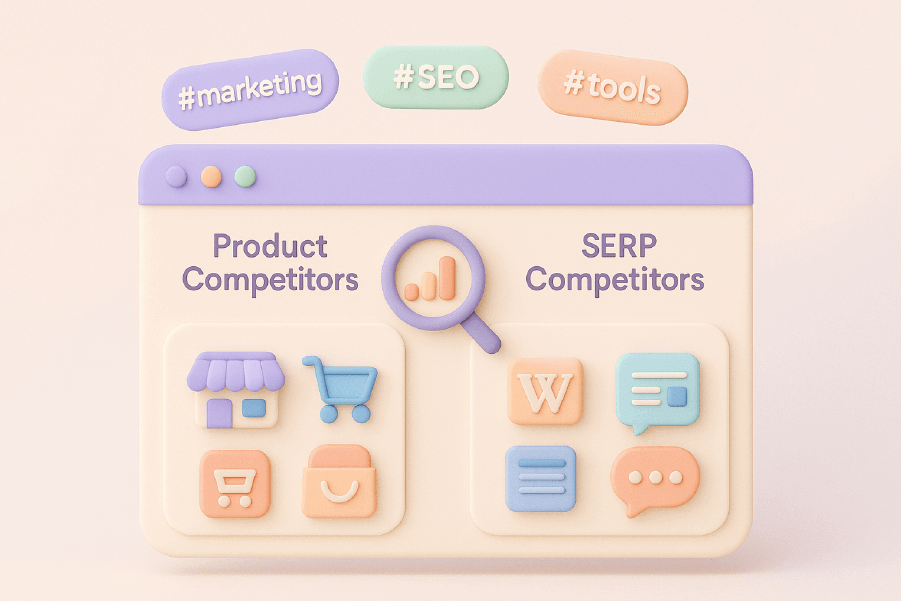Key Takeaways
- Customer journey encompasses all interactions from initial awareness through advocacy, spanning 5-7 distinct stages that businesses must optimize
- Companies focusing on customer journey mapping are 60% more profitable than those that don’t, with 80% of customers willing to pay more for superior experiences
- Effective journey mapping requires both solicited data (surveys, interviews) and unsolicited data (analytics, behavioral insights) to capture complete customer experiences
- Customer journey maps should be living documents updated after major product releases and shared across marketing, sales, and customer service teams
- Use a template as a practical tool to create, visualize, and update customer journey maps efficiently across teams
- Make sure journey maps are kept up to date and accurate, as only 36% of companies currently map customer journeys, creating significant competitive advantages for businesses that implement comprehensive journey strategies
Understanding your customer journey has become more than just a competitive advantage—it’s now essential for business survival. In today’s market, where customers interact with brands across multiple touchpoints and channels, businesses that fail to understand their customer’s experience risk losing 67% of potential customers who say their standards for good experiences are higher than ever.
The customer journey represents the complete path customers take from their first brand awareness through purchase, retention, and advocacy phases. This comprehensive guide will help you understand the customer journey, create effective customer journey maps, and implement strategies that improve the customer experience at every stage. Whether you’re looking to increase conversion rates, reduce customer churn, or enhance customer satisfaction, mastering the customer journey is fundamental to achieving your business goals.
Research shows that 69% of businesses now prioritize customer journey as their top investment for growth and marketing initiatives. Companies that take a look at their customer journeys and optimize them systematically see dramatic improvements: 174% increase in qualified leads and up to 30% reduction in customer acquisition costs.

What is a Customer Journey?
The customer journey is the complete path customers take from first brand awareness through purchase, retention, and advocacy phases. It encompasses every touchpoint, interaction, and experience across all channels and timeframes, providing businesses with a comprehensive view of how customers interact with their brand throughout the entire relationship lifecycle.
Unlike traditional linear marketing funnels, the modern customer journey is dynamic and multifaceted. Customers may enter at different stages, move back and forth between phases, and use multiple channels simultaneously. As the customer’s buying process evolves with each product update, it is important to regularly review and update the journey map to ensure it accurately reflects the current state. Understanding the customer journey helps businesses anticipate customer needs, identify pain points, and create seamless experiences that drive customer loyalty and business growth.
The customer journey differs significantly from other mapping approaches in both scope and application. While buyer journeys focus specifically on the path toward purchase decisions, customer journeys extend far beyond the buying process to include post-purchase experiences and long-term relationships. Mapping the customer’s experience across all stages helps identify pain points and improve engagement, enabling businesses to optimize not just conversion rates, but also customer retention, satisfaction, and advocacy.
Research indicates that customers now use an average of 10+ touchpoints during their journey, making it crucial for businesses to understand and optimize each customer’s interaction with the brand across all channels. Companies that successfully map and optimize their customer journeys report 15-25% improvement in customer experience metrics and significantly higher customer lifetime value compared to those that don’t prioritize journey optimization.
Journey mapping also helps businesses align their strategies with customers needs, ensuring that every stage of the journey is designed to meet and exceed customer expectations.

Customer Journey vs. Buyer Journey vs. User Journey
Understanding the distinctions between these three types of journeys is essential for effective customer experience management. Each serves different purposes and provides unique insights for business optimization.
The Customer Journey represents the holistic experience from awareness through advocacy, including all brand interactions across every channel and touchpoint. This comprehensive approach spans months or years and includes both direct and indirect brand interactions. Customer journeys help businesses understand the complete relationship lifecycle and optimize for long-term customer value rather than just immediate conversions.
The Buyer Journey focuses specifically on the path toward purchase decisions, including research, comparison, and decision stages. This journey typically spans days to months and concentrates on conversion optimization and sales process improvement. Buyer journeys are most useful for sales teams and conversion rate optimization initiatives.
The User Journey examines digital platform interactions and task completion within specific products or services. These journeys usually span minutes to hours and focus on usability, feature adoption, and digital experience optimization. User journeys are particularly valuable for product teams and UX designers working to improve specific digital experiences.
Journey Type | Timeframe | Primary Focus | Key Stakeholders | Business Applications |
|---|---|---|---|---|
Customer Journey | Months to Years | Complete relationship lifecycle | Marketing, Sales, Customer Success | Customer lifetime value optimization |
Buyer Journey | Days to Months | Purchase decision process | Sales, Marketing | Conversion rate optimization |
User Journey | Minutes to Hours | Product interaction and task completion | Product, UX/UI | Digital experience improvement |
Understanding when to use each type depends on your business goals and optimization needs. Identifying your target audience is crucial, as it helps determine which journey mapping approach will best address their needs and behaviors. Customer journeys are essential for businesses focused on customer retention and lifetime value, while buyer journeys work best for companies prioritizing lead generation and sales conversion. User journeys are most valuable for digital-first businesses and SaaS companies optimizing product experiences.
The 7 Stages of Customer Journey
Modern customer journeys include seven distinct stages instead of traditional five-stage models because today’s customers require more sophisticated nurturing and support throughout their relationship with brands. Each stage represents a distinct customer mindset, specific needs, and unique business opportunities that require tailored strategies and touchpoints. Purchasing is a critical stage within this journey, where customers evaluate their options and make decisions, playing a pivotal role in the overall process of engaging with a brand.
Research shows that customers who receive appropriate support at each stage are 23% more likely to become loyal advocates and generate significantly higher customer lifetime value. The seven-stage model provides businesses with more granular insights into customer behavior and enables more precise optimization strategies.
Industry studies indicate that only 15-30% of customers progress smoothly through all seven stages without intervention, making it crucial for businesses to understand and optimize each transition point. Companies that actively manage progression between stages see 40-60% higher conversion rates compared to those using generic approaches.
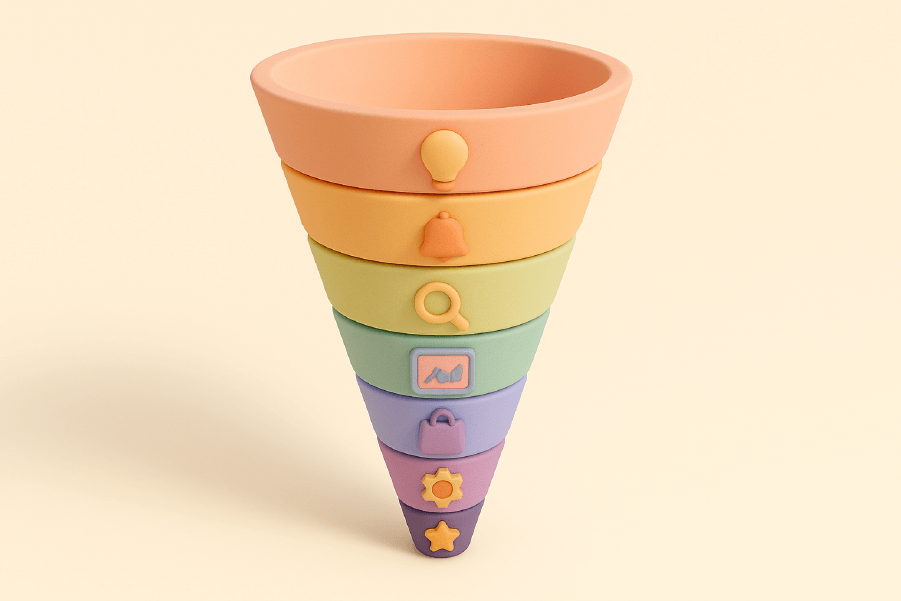
Stage 1: Out-of-Market
In the out-of-market stage, customers seek general improvement without specific solution awareness. They may recognize that something could be better in their business or personal life, but they haven’t yet identified what needs to change or what solutions might help. Getting the attention of potential customers at this stage is crucial, as it initiates engagement and sets the foundation for future interactions. This stage is characterized by openness to inspiration and new ideas rather than active problem-solving.
During this stage, customers consume educational content, attend industry events, and engage with thought leadership to understand trends and possibilities. They’re not actively researching solutions but are building awareness of what’s possible and developing preferences for brands that provide valuable insights.
The business focus should be on educational content, thought leadership, and brand awareness building. Companies that provide valuable information without overtly selling build trust and credibility that influences later decision-making. Content should address industry trends, best practices, and emerging opportunities rather than specific product features.
Example touchpoints include industry blogs, social media content, webinars, conferences, and networking events. The goal is to establish your brand as a trusted source of information and expertise that customers will remember when they enter active buying modes.
Key metrics to track include brand awareness surveys, content engagement rates, social media reach, and share of voice in industry conversations. Success in this stage is measured by brand recognition and perception rather than direct conversion metrics.
Stage 2: Trigger
A specific event or challenge motivates customers to seek change during the trigger stage. These triggers can be internal (declining performance, new leadership, growth goals) or external (competitive pressure, regulatory changes, market shifts). The trigger creates urgency and transforms passive awareness into active problem recognition.
Once you’ve got a list of common triggers or signals that indicate a customer is ready to move to the next stage, you can better tailor your approach. Common triggers include declining sales performance, customer complaints, regulatory compliance requirements, competitive threats, or new business opportunities. For individual consumers, triggers might include life events like moving, job changes, or major purchases that create new needs.
Business focus should shift to problem identification content, pain point solutions, and urgency messaging. Content should help customers understand the full scope of their challenges and the risks of inaction. This is not the time for product promotion but rather for establishing your brand as understanding their specific situation.
Key touchpoints include search engines, peer recommendations, industry reports, and problem-focused content. Customers in this stage actively seek information about their specific challenges and look for vendors who demonstrate deep understanding of their situation.
Research indicates that conversion rates from trigger to consideration typically range from 15-25%, making this a critical stage for capturing potential customers. Companies that provide relevant, timely content during trigger events are 40% more likely to be included in subsequent vendor evaluations.
Stage 3: Initial Brand Consideration
During initial brand consideration, customers research potential solutions and create a shortlist of vendors they want to evaluate further. At this stage, it is crucial to understand the preferences and needs of your target customers to ensure your brand aligns with what matters most to them. They form project teams and define requirements for their evaluation process, moving from problem recognition to solution exploration.
Customers in this stage conduct online research, read case studies, attend webinars, and seek peer recommendations. They’re comparing different approaches to solving their problem and evaluating which vendors seem most capable and credible. The average consideration set includes 3-7 vendors for B2B purchases and 2-4 options for B2C decisions.
Business focus must center on clear value propositions, feature comparisons, and credibility building. Content should position your solution effectively against alternatives while demonstrating expertise and customer success. This stage requires balancing comprehensive information with accessibility and clarity.
Critical touchpoints include company websites, case studies, product demos, sales materials, and comparison resources. The quality and relevance of these touchpoints significantly influence whether prospects include your brand in their active evaluation process.
Companies that excel in this stage provide easily accessible information that clearly differentiates their approach and demonstrates relevant expertise. They make it simple for prospects to understand their capabilities and envision successful outcomes.
Stage 4: Active Evaluation
Active evaluation involves deep vendor assessment through meetings, demos, proposals, and reference checks. Customers focus on solution fit, implementation feasibility, and vendor reliability. They conduct detailed analysis to ensure their chosen solution will deliver expected results and that the vendor can support successful implementation.
This stage typically involves multiple stakeholders and formal evaluation processes. Customers request proposals, conduct vendor presentations, check references, and may require proof-of-concept work. They’re evaluating not just the product or service but the entire vendor relationship and support ecosystem.
Business focus should be on personalized presentations, proof of concepts, and customer references. Sales teams must demonstrate deep understanding of customer requirements and present tailored solutions that address specific needs. Case studies and customer references have helped prospects make informed decisions during the evaluation stage. Generic presentations are ineffective in this stage.
Key interactions include sales meetings, technical demonstrations, proposal reviews, and reference calls. The quality of these interactions often determines vendor selection, making preparation and customization essential for success.
The typical evaluation period lasts 3-6 months for B2B purchases and 1-4 weeks for B2C decisions. Companies that provide excellent evaluation experiences are 60% more likely to win deals, even when not offering the lowest price or most features.
Stage 5: Purchase Decision
The purchase decision stage involves final vendor selection, contract negotiation, and implementation planning. At this point, customers are guided through the process to make a purchase, and it is crucial for businesses to support them by optimizing every touchpoint and reducing barriers that could prevent them from completing their purchase. Customers make their choice based on solution fit, vendor credibility, pricing, and confidence in successful implementation. Internal approval processes and stakeholder alignment are critical during this phase.
Common friction points include pricing transparency, complex checkout processes, payment options, and approval procedures. Many potential purchases fail at this stage due to unnecessary complexity or misaligned expectations between vendor and customer.
Business focus must be on competitive pricing, contract flexibility, and implementation support. Companies should remove purchase barriers, provide clear pricing information, and demonstrate commitment to customer success. The goal is making the purchase decision as easy and confident as possible.
This stage often involves multiple decision-makers and requires addressing various concerns and requirements. Sales teams must coordinate with legal, technical, and financial stakeholders to ensure smooth progression to purchase.
Statistics show cart abandonment rates of 70% for e-commerce and 60% for B2B purchases, highlighting the importance of optimizing the purchase experience. Companies that streamline their purchase processes see 25-40% higher conversion rates from evaluation to purchase.
Stage 6: Experience/Onboarding
The experience and onboarding stage covers product implementation, user training, and initial value realization. This critical period determines customer satisfaction and long-term success with their purchase. Effective onboarding ensures customers achieve early wins and build confidence in their decision.
This stage involves technical implementation, user training, change management, and initial support. Making sure customers receive the necessary support and training during onboarding is essential for a smooth transition and successful adoption. Customers need to see tangible value quickly to validate their purchase decision and build momentum for long-term success. Poor onboarding experiences lead to buyer’s remorse and early churn.
Business focus should be on smooth onboarding, comprehensive training programs, and proactive support. Companies must help customers achieve quick wins while building capabilities for long-term success. Regular check-ins and progress monitoring ensure customers stay on track.
Success metrics include time to value, user adoption rates, support ticket volume, and customer satisfaction scores. Companies should track these metrics closely and intervene quickly when customers show signs of struggling with implementation.
Industry research indicates that the first 90 days determine 80% of customer retention outcomes. Companies that invest heavily in onboarding see 40% higher customer lifetime value and 50% lower churn rates compared to those with basic onboarding processes.
Stage 7: Loyalty and Advocacy
The loyalty and advocacy stage focuses on ongoing value delivery, relationship expansion, and referral generation. Satisfied customers become brand advocates through reviews, referrals, and testimonials, providing valuable marketing support and credible social proof for potential customers.
To maximize advocacy, it is important to identify the times when customers are most likely to engage in advocacy activities, such as after a successful purchase or positive support interaction.
Loyal customers typically generate 23% more revenue through repeat purchases, upgrades, and referrals compared to average customers. They also cost significantly less to serve and provide valuable feedback for product improvement and innovation.
Business focus should be on account expansion, loyalty programs, and referral incentives. Companies must continue delivering value while identifying opportunities for deeper relationships and additional services. The goal is transforming satisfied customers into active promoters.
Advocacy touchpoints include review sites, social media, peer networks, case studies, and referral programs. Companies should make it easy for satisfied customers to share their positive experiences and reward them for advocacy activities.
Measuring advocacy involves tracking Net Promoter Scores, referral rates, online reviews, and case study participation. Companies that systematically cultivate advocacy see 2-3x higher organic growth rates compared to those that don’t prioritize customer advocacy.
Benefits of Understanding Customer Journey
Understanding the customer journey delivers substantial ROI for businesses that implement comprehensive mapping and optimization strategies. Research shows companies using data-driven customer journey approaches experience a 174% increase in qualified leads and achieve significantly higher customer lifetime values compared to businesses that rely on traditional funnel approaches.
The benefits extend beyond marketing and sales to encompass every customer-facing function. When organizations align around customer journey insights, they break down silos, improve collaboration, and make decisions based on customer needs rather than internal assumptions. This customer-centric approach drives sustainable competitive advantages and long-term business growth.
Companies that prioritize customer journey understanding also demonstrate greater agility in adapting to market changes and customer expectations. They can quickly identify emerging trends, adjust strategies, and maintain relevance in rapidly evolving markets.
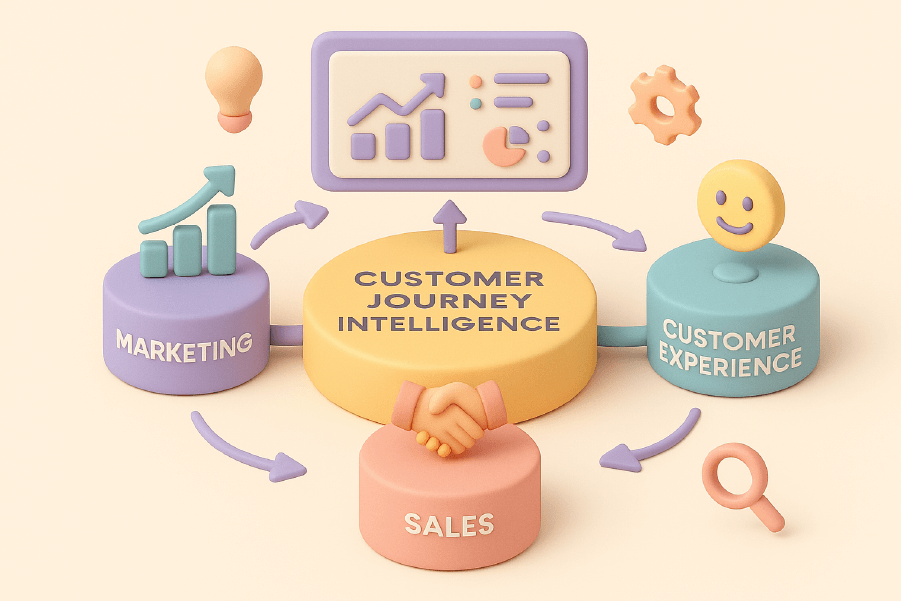
Improved Customer Experience and Retention
Understanding the customer journey enables businesses to identify friction points causing customer drop-off at each stage. This visibility allows for proactive customer service and issue resolution before problems escalate into churn or negative experiences. Customer journey maps are widely used to identify and address retention challenges by visualizing customer actions and emotions throughout the journey. Even a 5% increase in customer retention can boost profits by 25-95%, making journey optimization a high-impact investment.
Journey mapping reveals where customers experience confusion, frustration, or unnecessary effort. For example, one company discovered that switching from a free trial to a demo request doubled demo inquiries because prospects preferred speaking with experts rather than struggling with self-service trials. This insight led to a complete restructuring of their acquisition strategy.
Customer journey optimization also reduces customer acquisition costs through improved conversion rates at each stage. When businesses remove friction and provide appropriate support, more prospects progress through the journey successfully, increasing overall conversion efficiency and reducing marketing waste.
The systematic approach to journey optimization creates predictable improvements in customer satisfaction scores, renewal rates, and expansion revenue. Companies report 15-20% improvements in these metrics within 6-12 months of implementing comprehensive journey strategies.
Enhanced Cross-Department Alignment
Customer journey mapping creates shared understanding between marketing, sales, and customer service teams, breaking down silos through a unified customer-centric approach. This alignment improves handoffs between departments and reduces customer confusion caused by inconsistent messaging or disjointed experiences.
When teams understand the complete customer journey, they can coordinate their efforts more effectively. Marketing creates content that supports sales conversations, sales teams understand customer context from earlier touchpoints, and customer service teams can anticipate needs based on journey stage and history.
Research indicates that 87% of companies report better collaboration after implementing journey mapping. Cross-functional teams develop empathy for customer experiences and work together to solve problems rather than optimizing their individual functions in isolation.
This alignment also supports more effective resource allocation. Instead of each department competing for budget based on their own metrics, teams can prioritize investments based on customer impact and journey optimization opportunities. This collaborative approach typically yields higher ROI than fragmented optimization efforts.
Data-Driven Decision Making
Customer journey mapping replaces assumptions with customer feedback and behavioral data, enabling more accurate and effective business decisions. Instead of relying on internal opinions about customer preferences, organizations can use journey insights to validate strategies and predict outcomes.
The data-driven approach enables predictive analytics for customer behavior and business outcomes. Companies can identify early warning signals for churn, predict which prospects are most likely to convert, and anticipate customer needs before they become urgent problems.
Journey analytics also support budget allocation based on customer impact and ROI rather than traditional metrics or historical spending patterns. Companies using customer journey analytics report 15-20% improvement in marketing efficiency through better resource allocation and targeting.
This framework provides structure for testing and validating business strategies before full implementation. Organizations can pilot journey improvements with small customer segments, measure results, and scale successful initiatives while avoiding costly mistakes.
Customer Journey Mapping: Definition and Process
Customer journey mapping creates a visual representation of customer experiences across all touchpoints and timeframes, combining customer actions, emotions, pain points, and business processes in a single, comprehensive view. To create a customer journey, organizations typically gather data, conduct workshops, and collaborate across teams to ensure the journey reflects real customer experiences. Creating a customer journey involves mapping out each stage and touchpoint to understand pain points, opportunities, and the overall experience. This visualization tool helps organizations understand the complete customer experience and identify specific opportunities for improvement. Using a template can further streamline the journey mapping process, making it easier to design and communicate complex experiences.
Effective journey maps go beyond simple process documentation to include emotional context, decision-making factors, and the business systems that support each interaction. They provide a framework for understanding not just what customers do, but why they do it and how they feel throughout the process.
Research shows that only 20% of businesses collect feedback specifically focused on buying process optimization, creating significant opportunities for companies that invest in comprehensive journey mapping. Organizations that implement systematic mapping approaches report dramatic improvements in customer satisfaction and business performance.
Journey maps serve multiple purposes: they guide strategy development, support cross-functional alignment, enable performance measurement, and provide frameworks for continuous improvement. The most effective maps become living documents that evolve with customer behavior and business changes.
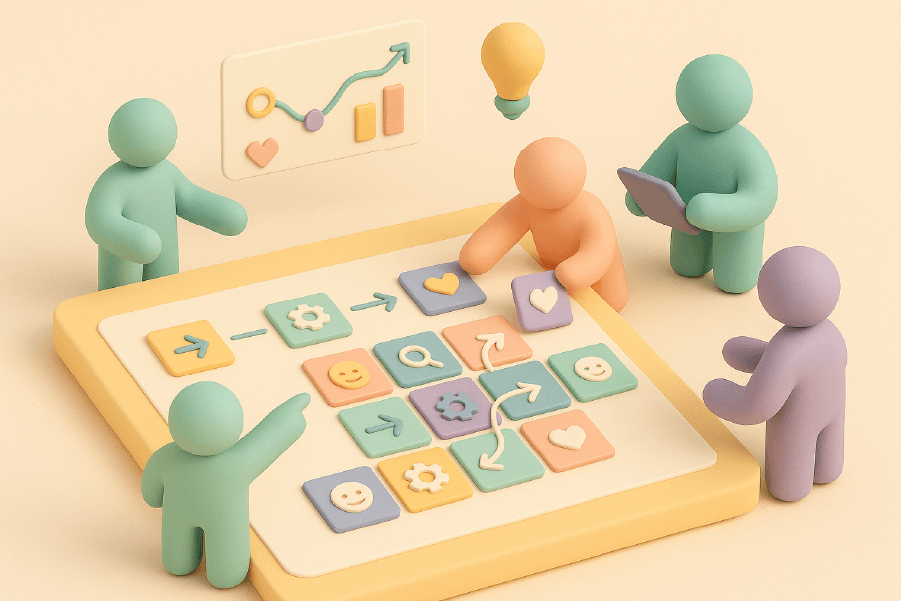
Types of Customer Journey Maps
Current State Maps document existing customer experiences and identify improvement opportunities within current business processes and systems. These maps provide baseline understanding of how customers actually experience your brand, often revealing significant gaps between intended and actual experiences.
Current state mapping involves collecting data about existing touchpoints, customer actions, pain points, and emotions throughout the journey. This type of map is essential for understanding where problems exist and prioritizing improvement efforts based on customer impact and business feasibility.
Future State Maps visualize desired customer experiences and guide strategic planning for new processes, systems, or services. These aspirational maps help organizations envision ideal customer experiences and create roadmaps for achieving them over time.
Future state mapping requires balancing customer needs with business constraints and capabilities. The most effective future state maps are ambitious enough to drive meaningful improvement but realistic enough to guide practical implementation planning.
Day-in-the-Life Maps show customer context beyond direct brand interactions, helping organizations understand how their products or services fit into customers’ broader lives and responsibilities. These maps provide crucial context for understanding customer priorities, constraints, and decision-making factors.
Service Blueprint Maps include backend processes and employee interactions that affect customer experience, providing comprehensive view of the operational requirements for delivering excellent customer experiences. These detailed maps help organizations identify internal process improvements needed to support better customer experiences.
Essential Data for Journey Mapping
Effective journey mapping requires both solicited and unsolicited data to capture complete customer experiences. Solicited data includes customer surveys, interviews, Net Promoter Score (NPS) feedback, Customer Satisfaction (CSAT) ratings, and social media comments that customers provide intentionally.
Customer interviews remain the most valuable source of journey insights, providing rich qualitative data about motivations, emotions, and decision-making processes. Companies should conduct 20-30 interviews per persona to identify reliable patterns and insights that inform map development.
Unsolicited data includes website analytics, cart abandonment rates, support ticket analysis, usage patterns, and behavioral data that customers generate through their actions. This data provides objective insights into actual customer behavior rather than reported behavior.
Research indicates that 50% of organizations have little understanding of their customer journey due to insufficient data collection and analysis. Companies must combine qualitative insights with quantitative metrics to develop comprehensive understanding of customer experiences.
The most effective journey mapping projects use multiple data sources to validate insights and ensure accuracy. Single-source maps often miss critical insights or reflect biased perspectives that don’t represent broader customer experiences.
How to Create Customer Journey Map: Step-by-Step Process
Creating effective customer journey maps requires a systematic approach typically taking 4-8 weeks for comprehensive mapping projects. Cross-functional team involvement is essential for accurate and actionable maps that reflect real customer experiences and organizational capabilities. While the initial investment may seem significant, journey mapping can save much time in the long run by streamlining processes and reducing repetitive issues.
The process should result in actionable insights and clear improvement priorities rather than just documentation of current processes. Successful mapping projects create shared understanding across teams and drive specific improvements in customer experience and business performance.
Organizations should expect to invest significant time and resources in data collection, analysis, and validation to ensure map accuracy and usefulness. The most successful projects treat mapping as strategic initiatives with executive sponsorship and clear success metrics.
Timeline management is crucial for maintaining momentum and stakeholder engagement throughout the mapping process. Projects that extend beyond 3 months often lose focus and fail to deliver actionable results.
Step 1: Define Objectives and Scope
Clarifying business goals is essential before beginning any mapping project. Common objectives include improving conversion rates, reducing customer churn, enhancing customer satisfaction, or identifying new revenue opportunities. Clear objectives guide data collection and ensure the mapping process focuses on actionable insights.
Determining map scope involves deciding whether to map the complete journey or focus on specific stages or touchpoints. Full journey maps provide comprehensive insights but require more time and resources, while targeted maps can address specific problems more quickly.
Identifying primary stakeholders and map users across the organization ensures the mapping process includes relevant perspectives and creates buy-in for resulting improvements. Executive sponsorship is crucial for resource allocation and change management support.
Setting success metrics and timeline for the mapping project helps maintain focus and measure impact. Example objectives might include increasing demo-to-purchase conversion by 25% or reducing customer support tickets by 30% within six months of implementation.
The scope definition process should also identify which customer segments or personas to include in the mapping effort. Most organizations find that mapping 1-3 primary personas provides sufficient insight without overwhelming the project team.
Step 2: Create Detailed Buyer Personas
Developing 1-3 primary personas based on customer research and data analysis provides the foundation for accurate journey mapping. Creating customer personas is a foundational step, as it allows you to identify and understand different customer types for more customized journey maps. Personas should include demographics, pain points, goals, preferred channels, and decision-making processes that influence how customers navigate their journeys.
Effective personas go beyond basic demographics to include behavioral patterns, motivations, and contextual factors that drive customer decisions. For example: “Sarah, Marketing Manager, 32, uses social media for research, values peer recommendations, and makes decisions collaboratively with her team.”
Persona validation through customer interviews and survey data ensures accuracy and prevents internal assumptions from distorting the mapping process. Organizations should test persona accuracy with frontline employees who interact with customers regularly.
Creating separate journey maps for each distinct persona recognizes that different customer types may have significantly different experiences and needs. B2B personas often require more complex journeys reflecting multiple decision-makers and longer evaluation processes.
The persona development process should also identify which personas represent the highest value opportunities for the business, helping prioritize mapping efforts and improvement investments.
Step 3: Map All Customer Touchpoints
Identifying every interaction point across online and offline channels requires comprehensive analysis of customer behavior and business processes. It is essential to identify and map all relevant touch points across the customer journey to ensure no moment of customer interaction is overlooked. Touchpoints include both direct interactions (website visits, sales calls) and indirect ones (online reviews, social media mentions) that influence customer perceptions and decisions.
Customer interviews and analytics data help discover hidden touchpoints that customers use but businesses may not track or optimize. The average B2B customer uses 10+ touchpoints before purchase, while B2C customers typically use 6-8 touchpoints during their journey.
Organizing touchpoints by journey stage and frequency of interaction helps prioritize optimization efforts and identify gaps where customers need support but none currently exists. This systematic approach ensures comprehensive coverage of the customer experience.
The touchpoint mapping process should also identify which interactions are owned by the business versus third-party channels like review sites or social media platforms. Understanding this distinction helps determine where direct optimization is possible versus where influence strategies are needed.
Documentation should include the purpose, frequency, and quality of each touchpoint from the customer’s perspective, providing foundation for improvement prioritization.
Step 4: Document Customer Actions and Emotions
Recording what customers do, think, and feel at each touchpoint provides essential context for understanding why customers behave as they do and where improvements can have the greatest impact. This documentation should include both rational considerations and emotional responses that influence decision-making.
Customer emotions strongly correlate with purchase decisions and loyalty, making emotional mapping crucial for effective journey optimization. Emotional journey graphs visualize customer sentiment over time, helping identify moments of frustration or delight that disproportionately influence outcomes.
Including direct customer quotes and feedback provides authentic voice to support emotional mapping and helps stakeholders understand customer perspectives. Pain points and friction areas should be documented with specific examples and customer impact assessments.
The documentation process should also capture moments of truth that disproportionately influence customer decisions and satisfaction. These high-impact moments often provide the best opportunities for meaningful improvement with relatively modest investment.
Regular validation through additional customer research ensures that documented experiences accurately reflect current customer reality rather than outdated or assumed behaviors.
Step 5: Identify Gaps and Opportunities
Analyzing current customer experience against ideal journey requirements helps identify specific improvement opportunities that can drive business impact. This analysis should prioritize opportunities based on customer impact, business feasibility, and strategic importance.
Gap identification involves comparing customer needs at each stage with available support and touchpoints. Missing touchpoints where customers need help but none exists often represent high-impact improvement opportunities that competitors may also be missing.
The opportunity assessment should focus on moments of truth that disproportionately influence customer decisions and satisfaction. Small improvements at critical moments often yield better results than major investments in less important touchpoints.
Creating action plans with specific owners, timelines, and success metrics ensures that mapping insights translate into actual improvements. Without clear implementation planning, many mapping projects fail to deliver business value.
Priority setting should balance quick wins that build momentum with longer-term strategic improvements that drive sustainable competitive advantage.
Step 6: Validate and Refine Maps
Testing journey map accuracy through additional customer interviews and data analysis ensures that maps reflect actual customer experiences rather than internal assumptions or outdated information. Validation should include both current customers and prospects to capture complete journey perspectives.
Sharing maps with frontline employees provides valuable validation and insights from team members who interact with customers regularly. These employees often identify inaccuracies or missing elements that customer interviews may not reveal.
Conducting usability testing on proposed improvements before full implementation helps avoid costly mistakes and ensures that changes actually improve customer experience. Small-scale pilots can test effectiveness before broader rollouts.
Creating feedback loops enables continuous improvement of map accuracy and usefulness. Maps should be updated quarterly or after major product, service, or market changes to maintain relevance and accuracy.
The validation process should also include cross-functional review to ensure maps accurately reflect operational capabilities and constraints that affect customer experience delivery.
Customer Journey Touchpoints and Channels
Customer touchpoints represent all interaction opportunities between customers and brands throughout the complete journey. Modern customers use an average of 10+ channels during their journey, making comprehensive touchpoint optimization essential for delivering consistent, positive experiences.
Effective touchpoint management requires understanding that customers view their experience as a single journey rather than separate interactions with different channels or departments. This omnichannel perspective demands that businesses coordinate touchpoint experiences to create seamless progression through journey stages.
Research shows that 89% of customers expect consistent experiences across all channels, but only 22% of businesses currently deliver this level of integration. This gap creates significant opportunities for companies that can successfully coordinate touchpoint experiences.
The complexity of modern touchpoint ecosystems requires systematic approaches to identification, optimization, and performance measurement. Companies must balance channel effectiveness with customer preferences and business capabilities to create optimal touchpoint strategies.

Digital Touchpoints
Digital touchpoints include website pages, mobile apps, social media platforms, email campaigns, search engine results, online advertisements, review sites, and chatbots. These touchpoints often provide first impressions and ongoing engagement opportunities throughout the customer journey.
Digital touchpoints offer significant advantages in terms of scalability, measurement, and personalization capabilities. Companies can track detailed analytics, conduct A/B testing, and deliver personalized content based on customer behavior and preferences.
The effectiveness of digital touchpoints depends heavily on user experience design, content quality, and technical performance. Site speed, mobile optimization, and intuitive navigation significantly impact customer progression through journey stages.
Successful digital touchpoint optimization requires ongoing performance monitoring through analytics, conversion tracking, and user feedback collection. Companies should measure both individual touchpoint performance and cross-channel customer progression.
Integration between digital touchpoints is crucial for maintaining consistency and avoiding customer confusion. Customers expect information, preferences, and progress to carry forward across different digital interactions.
Human Touchpoints
Human touchpoints include sales calls, customer service interactions, in-person meetings, events, customer success manager check-ins, technical support, and training sessions. These interactions are critical for complex sales processes and relationship building that drive long-term customer value.
The quality of human interactions significantly impacts customer loyalty and advocacy because they provide personalization and empathy that digital touchpoints cannot match. Customers often remember human interactions more vividly and use them to form overall brand impressions.
Training staff on journey stages and customer needs at each interaction point ensures that human touchpoints support journey progression rather than creating friction or confusion. Representatives should understand where customers are in their journey and adapt their approach accordingly.
Human touchpoints require different measurement approaches than digital interactions, often relying on qualitative feedback, satisfaction scores, and outcome tracking rather than detailed behavioral analytics.
The coordination between human and digital touchpoints is particularly important for maintaining consistency and ensuring that customer information transfers effectively between channels.
Physical Touchpoints
Physical touchpoints include retail locations, product packaging, printed materials, signage, physical product experiences, and delivery and installation processes. These touchpoints are often underestimated but can be crucial for brand perception and customer satisfaction.
Physical touchpoints provide tangible brand experiences that can create strong emotional connections and memorable impressions. The quality of physical interactions often influences customer willingness to recommend brands to others.
Ensuring that physical touchpoints align with digital brand experience and messaging maintains consistency across the complete customer journey. Disconnects between physical and digital experiences can confuse customers and undermine brand trust.
Physical touchpoint optimization often requires different skills and processes than digital optimization, involving supply chain management, retail operations, and product design considerations.
Measurement of physical touchpoint effectiveness may require specialized approaches including mystery shopping, location-based analytics, and post-interaction surveys to capture customer feedback and performance data.
Tools and Templates for Customer Journey Mapping
The range of journey mapping tools spans from simple templates to sophisticated analytics platforms that integrate real-time customer data with visual mapping capabilities. Using a template can greatly simplify and standardize the journey mapping process, making it easier for teams to create, share, and update customer journey maps efficiently. Tool selection should depend on organization size, mapping complexity, available budget, and stakeholder technical capabilities.
The most important factor in tool selection is ease of use and stakeholder adoption rather than feature complexity. Tools that team members actually use and update are more valuable than sophisticated platforms that remain unused due to complexity or access barriers.
Successful journey mapping often begins with simple tools and templates to establish processes and stakeholder buy-in before investing in more sophisticated platforms. This progressive approach allows organizations to understand their requirements before making significant technology investments.
Cost considerations should include not just software licensing but also training time, implementation effort, and ongoing maintenance requirements that may require dedicated resources or external support.
Free Templates and Tools
Google Sheets and Excel templates provide accessible starting points for basic journey mapping projects. You can get a free template to start your journey mapping project and include customer actions, emotions, touchpoints, and pain points in structured formats that teams can easily customize and share.
Canva and PowerPoint templates offer visual journey map creation capabilities with professional designs and drag-and-drop functionality. These tools work well for creating presentation-ready maps that can be shared with stakeholders and executives.
Miro and Mural provide collaborative online mapping capabilities that enable remote teams to work together on journey mapping projects. These platforms offer infinite canvas space, sticky note functionality, and real-time collaboration features.
HubSpot offers free customer journey map templates designed for different business types and use cases. These templates include guidance on data collection and provide structured frameworks for mapping different types of customer experiences.
Free tools often provide sufficient capability for initial mapping projects and help organizations understand their requirements before investing in paid platforms. Many companies successfully complete comprehensive mapping projects using only free tools and templates.
Advanced Journey Mapping Software
UXPressia, Smaply, and Touchpoint Dashboard offer comprehensive mapping platforms with advanced features including persona management, stakeholder map integration, and collaborative editing capabilities. These platforms typically cost $30-200+ per user per month.
Advanced platforms often include integration capabilities with CRM systems, analytics platforms, and customer feedback tools that enable real-time data integration and automated journey tracking. These integrations can significantly reduce manual effort required to maintain map accuracy.
Real-time data integration enables dynamic journey maps that update automatically based on customer behavior and business performance data. This capability transforms static mapping documents into living tools that reflect current customer experiences.
Feature comparison between platforms should consider collaboration capabilities, data integration options, visual design flexibility, and reporting functionality. Organizations should evaluate platforms based on their specific requirements rather than general feature lists.
Advanced platforms often require implementation support and user training to achieve full value, making total cost of ownership higher than licensing fees alone. Organizations should budget for these additional requirements when evaluating platform options.
Measuring Customer Journey Success
Defining Key Performance Indicators (KPIs) for each journey stage and overall customer experience enables organizations to track improvement progress and demonstrate ROI from journey optimization investments. Effective measurement requires balancing leading indicators that predict future performance with lagging indicators that measure ultimate outcomes.
Regular measurement enables continuous journey optimization and provides data for demonstrating business impact to stakeholders and executives. Companies that systematically measure journey performance typically see sustained improvement over time rather than one-time gains.
The measurement framework should align with business goals and include both customer-centric metrics (satisfaction, effort) and business-centric metrics (conversion rates, revenue). This balanced approach ensures that improvements benefit both customers and business performance.
Dashboard design and reporting structures should make journey performance visible to relevant stakeholders and enable quick identification of problems or opportunities requiring attention.
Stage-Specific Metrics
Awareness stage metrics include brand recognition surveys, website traffic volumes, social media reach, and content engagement rates. These metrics indicate how effectively the business generates initial customer interest and builds brand awareness within target markets.
Consideration stage metrics focus on lead quality scores, content download rates, demo requests, and competitive win rates. These indicators measure how well the business converts awareness into active evaluation and positions itself favorably against alternatives.
Purchase stage metrics include conversion rates from evaluation to purchase, sales cycle length, average deal size, and cart abandonment rates. These metrics reveal how effectively the business removes purchase barriers and supports confident decision-making.
Retention stage metrics encompass customer satisfaction scores, renewal rates, expansion revenue, and support ticket volume. These indicators measure ongoing customer success and relationship health beyond initial purchase completion.
Advocacy stage metrics include Net Promoter Score (NPS), referral rates, online review generation, and case study participation rates. These metrics indicate customer willingness to recommend the brand and actively support business growth.
Overall Journey Health Metrics
Customer Lifetime Value (CLV) provides comprehensive measurement of journey optimization impact, with optimized journeys typically generating $2,400 average CLV compared to $1,200 for non-optimized experiences. This metric captures the long-term business impact of improved customer experiences.
Customer Effort Score (CES) measures how easy customers find it to progress through journey stages and complete desired actions. Lower effort scores correlate strongly with higher satisfaction and loyalty, making this metric valuable for optimization prioritization.
Journey completion rates and stage-to-stage conversion percentages reveal where customers encounter friction or abandon their journeys. These metrics help identify specific optimization opportunities with the highest potential impact.
Time to value metrics measure how quickly customers achieve meaningful benefits from their purchases, with faster time to value correlating with higher retention and satisfaction rates. This metric is particularly important for complex products or services requiring implementation.
Overall customer satisfaction (CSAT) and loyalty metrics across the complete journey provide holistic measures of customer experience quality and business relationship health over time.
Common Customer Journey Mapping Mistakes
Learning from typical pitfalls helps ensure successful journey mapping implementation and avoids common reasons why 60% of journey mapping projects fail to deliver expected business value. Understanding these mistakes enables organizations to implement processes and safeguards that increase success probability.
The most successful mapping projects focus on actionable insights rather than mapping for the sake of documentation. Maps should drive specific improvements and business outcomes rather than simply documenting current processes.
Organizational factors often contribute more to mapping failure than technical or methodological issues. Change management, stakeholder engagement, and ongoing maintenance processes determine whether mapping insights translate into business improvements.
Assumption-Based Mapping
Creating journey maps based on internal perceptions rather than actual customer data represents the most common and damaging mistake in journey mapping projects. These assumption-based maps often reflect how businesses think customers behave rather than how they actually experience the journey.
The solution requires conducting comprehensive customer interviews, surveys, and behavioral analysis before beginning map creation. Organizations should gather data from at least 20-30 customers per persona to identify reliable patterns and insights that inform accurate mapping.
Validating assumptions through direct customer feedback and testing prevents costly optimization investments based on incorrect understanding of customer needs and behaviors. Regular validation ensures that maps remain accurate as customer expectations and behaviors evolve.
For example, one company discovered that customers highly valued phone support over chat support, contrary to internal assumptions about digital preferences. This insight led to staffing and training investments that significantly improved customer satisfaction and retention.
Internal stakeholder workshops should focus on analyzing customer data rather than generating assumptions about customer behavior. This data-driven approach produces more accurate maps and builds stakeholder confidence in resulting insights.
One-Time Mapping Exercise
Treating journey maps as static documents rather than living tools undermines their long-term value and accuracy. Customer behavior and expectations change rapidly, especially in digital environments and following major market disruptions.
The solution involves establishing processes for regular map updates and reviews, typically quarterly for rapidly changing markets and annually for more stable industries. Major product releases, competitive changes, or market shifts should trigger immediate map reviews.
Creating systematic processes for ongoing customer feedback collection and map refinement ensures that maps remain current and useful for decision-making. Organizations should assign specific team members responsibility for map maintenance and updates.
Customer journey maps should evolve continuously based on new data, changing customer expectations, and business strategy updates. Static maps quickly become outdated and may guide organizations toward optimization efforts that no longer address current customer needs.
Regular cross-functional reviews create opportunities to discuss journey changes and coordinate improvement efforts across departments and touchpoints.
Lack of Cross-Functional Involvement
Creating journey maps in isolation without input from all customer-facing teams produces incomplete and potentially inaccurate representations of customer experiences. Different departments often have unique insights into customer behavior and pain points that mapping teams may miss.
Including representatives from marketing, sales, customer success, and support teams ensures comprehensive perspective on customer experiences across all journey stages. Frontline employees often have the most accurate understanding of customer pain points and real-world interaction challenges.
Sharing completed maps across the organization and training teams on customer journey insights ensures that mapping investments translate into improved customer experiences. Maps that remain within single departments provide limited business value.
Creating regular cross-functional reviews provides ongoing opportunities to discuss journey improvements, coordinate optimization efforts, and share insights across departments. These collaborative processes often identify improvement opportunities that individual departments cannot address alone.
The mapping process should also include executive sponsorship to ensure organizational commitment to acting on mapping insights and investing in necessary improvements.
FAQ
How long does it typically take to create a comprehensive customer journey map?
A thorough customer journey mapping project usually takes 4-8 weeks, including customer research, data analysis, map creation, and stakeholder validation. Simple maps focusing on specific touchpoints can be created in 1-2 weeks, while complex B2B journeys with multiple personas may require 2-3 months. The timeline depends on the scope of mapping, availability of existing customer data, and the number of stakeholders involved in the validation process.
What’s the difference between customer journey mapping and user experience (UX) mapping?
Customer journey mapping covers the entire relationship from awareness through advocacy across all channels and touchpoints, while UX mapping focuses specifically on user interactions with digital products or services. Customer journey maps are broader in scope and include offline touchpoints, emotions, and business processes that affect the complete customer relationship. UX maps concentrate on usability, task completion, and digital interface optimization within specific products or platforms.
How often should customer journey maps be updated?
Customer journey maps should be reviewed quarterly and updated after major product releases, market changes, or significant shifts in customer behavior. At minimum, organizations should conduct annual comprehensive reviews with fresh customer research and data analysis. Companies in rapidly changing markets or digital environments may need monthly reviews to maintain accuracy. Real-time data integration capabilities can enable continuous map refinement and updates.
What team size is optimal for customer journey mapping projects?
The ideal mapping team includes 5-8 people representing different functions: project lead, customer research specialist, marketing representative, sales representative, customer success/support representative, and data analyst. Including an executive sponsor ensures resource allocation and organizational commitment to acting on mapping insights. Larger teams can become unwieldy, while smaller teams may lack necessary perspective and expertise for comprehensive mapping.
How do you measure ROI from customer journey mapping initiatives?
Measure ROI by tracking improvements in key performance indicators like conversion rates between journey stages, customer satisfaction scores, retention rates, and customer lifetime value. Compare performance metrics before and after journey optimization implementation, typically measuring results 6-12 months post-implementation. Many organizations see 15-25% improvement in customer experience metrics and 20-30% increase in customer lifetime value. Calculate ROI by comparing improvement gains against mapping and optimization investment costs.
Introduction to Customer Experience
You know what’s at the heart of every business that actually succeeds? Customer experience. It’s not just some buzzword—it’s the entire journey your customer takes with you, from that first moment they hear about your brand to way after they’ve bought something from you. Every single interaction, whether it’s online or in your store, shapes what they think about you and whether they’ll stick around or move on to your competitor. If you’re trying to make it in today’s crazy competitive world, you’ve got to understand and nail the customer experience—there’s just no way around it.
Here’s the thing though—you can’t just wing it. A powerful way to actually get this right is through something called a customer journey map. Think of it like having a roadmap that shows you exactly what your customer goes through at every step, helping you see things from their perspective instead of just guessing. When you map out each step of their journey, you’ll spot opportunities you never knew existed, fix those annoying pain points that drive people away, and make sure every stage feels smooth and satisfying. At the end of the day, when you really understand your customer’s journey, you’ll create connections that actually mean something, get people coming back for more, and build the kind of loyalty that keeps your business thriving for years to come.
Definition of Customer Experience
Imagine this: you’re trying to understand what makes customers stick around, what makes them choose you over the competition, and what turns them into raving fans who can’t stop talking about your business. That’s customer experience—it’s the sum of every single interaction and moment your customers have with your product, service, or brand throughout their entire journey with you. It’s shaped by every stage of their relationship with your business, from that first moment they discover you exist all the way through to ongoing support when they need you most. You can’t just wing it though—effective customer experience strategies are built on really understanding and meeting customer needs at every single stage, making sure each interaction feels positive, memorable, and totally aligned with what your brand stands for.
Here’s the thing about creating exceptional customer experience—it means you’re anticipating what your customers need before they even know they need it, you’re exceeding their expectations, and you’re delivering real value at every touchpoint along the way. Whether it’s a smooth onboarding process that doesn’t make them want to pull their hair out, customer service that actually responds when they reach out, or a product that’s so user-friendly it practically uses itself—every detail matters. Brands that prioritize customer experience don’t just build stronger relationships, they inspire the kind of loyalty and advocacy that turns satisfied customers into enthusiastic promoters who’ll sing your praises to anyone who’ll listen. When you focus on the entire journey and address customer needs at each stage, you’re creating experiences that set you apart in the market and make competitors wonder what you’re doing that they’re not.
Customer Feedback: Listening to Your Customers
Picture this: you’re running your business, things seem to be going well, but something’s nagging at you. Are you really hearing what your customers are trying to tell you? Listening to your customers isn’t just good practice—it’s one of the most powerful ways to understand what they actually need, uncover those pain points that keep them up at night, and transform their entire experience with your brand. Customer feedback is like having a direct line into your customers’ minds, showing you exactly what they value, where they’re hitting roadblocks, and how they really see your products and services. When you actively seek out and respond to this feedback, you’re not just collecting data—you’re showing your customers that their voices matter and you’re making decisions based on real insights that drive genuine improvement.
Here’s the thing: customer feedback isn’t hiding from you—it’s everywhere if you know where to look. You can gather it through surveys, social media conversations, customer service calls, and those online reviews that can make or break your day. Each channel gives you a different angle on the customer experience, helping you spot trends and find those golden opportunities for enhancement. But here’s where it gets interesting—when you actually integrate this feedback into how you make decisions, that’s when the magic happens. You start addressing real pain points, refining what you offer, and building relationships that actually mean something to your customers. The bottom line? Take a proactive approach to customer feedback and you’ll see higher satisfaction, customers who stick around longer, and a competitive edge that sets you apart in the market.
Gathering and Leveraging Customer Feedback
If you want to truly understand what your customers are thinking, you’ve got to cast a wide net and listen from every angle possible. Think about it—you’re not just waiting for customers to come to you with their thoughts. A smart approach means you’re actively seeking out their voices through surveys and interviews while also tuning into the conversations they’re already having about you on social media and review sites. It’s like having your ear to the ground in multiple places at once. Each of these feedback channels gives you a different piece of the puzzle about what your customers actually need, what they love, and what’s driving them crazy.
Here’s where it gets interesting—once you’ve got all this feedback flowing in, you can start connecting the dots. You’ll spot patterns you never noticed before, uncover those hidden frustrations that customers never directly told you about, and catch onto emerging trends before your competitors do. When you prioritize improvements based on what actually matters to your customers, you’re not just putting band-aids on problems—you’re getting to the root of what’s really bothering them. Keep those customer conversations going and stay plugged into social media chatter, and you’ll always know which way the wind is blowing. The magic happens when you actually act on what you’re hearing. It doesn’t just solve problems—it shows your customers that you’re really listening, and that builds the kind of trust and loyalty that keeps them coming back.
Industry-Specific Customer Journey Mapping
Picture this: you’re mapping out your customer’s journey, and deep down you know that a one-size-fits-all approach just won’t cut it anymore. The truth is, customer journey mapping hits different when it actually reflects what makes your industry, your business model, and your customer base unique. Every sector has its own rhythm—different journey stages, touchpoints, and those frustrating pain points that can make or break the whole experience. Think about it: a retail business might be obsessing over that perfect in-store vibe and making sure products are actually on the shelves when customers want them, while a software company? They’re probably losing sleep over user onboarding, keeping customer support smooth, and nailing that tricky subscription renewal moment.
Here’s where it gets real—understanding these differences isn’t just nice to have, it’s absolutely crucial for creating journey maps that actually tell the true story of your customer’s path. When you tailor your journey mapping process to match what your industry demands and what your customers expect, you’re suddenly able to spot exactly where people hit those annoying friction points and figure out how to deliver an experience that actually wows them. This targeted approach? It’s your secret weapon for tackling those industry-specific headaches, boosting your customer support game, and crafting a journey that speaks to your users’ unique needs at every single touchpoint along the way.
Adapting Journey Maps for Different Sectors
Picture this: you’re looking at your industry and thinking, “How do I really understand what my customers are going through?” Here’s the thing—adapting a customer journey map to fit your particular industry isn’t just about copying what everyone else is doing. It’s like being a detective, diving deep into research and really getting to grips with how your customers behave, what keeps them up at night, and what’s happening in your market right now. You’ve got to start by asking yourself: what are the key stages that actually matter in my world? What touchpoints are make-or-break moments? And where are the pain points that have your customers pulling their hair out? Take healthcare, for instance—your customer’s journey isn’t just about buying something, it’s about diagnosis, treatment, and recovery, with crucial moments like doctor visits, managing medications, and those patient support programs that can make all the difference.
But here’s where it gets really interesting—when you roll up your sleeves and actually talk to your customers, when you dig into what makes them tick, that’s when you uncover the gold. You start to see the unique needs and expectations that define your sector, and suddenly you’re not just creating another generic journey map—you’re crafting something that reflects the real, messy, complicated experience your customers are living. Think about it: a financial services company isn’t just selling products, they’re building trust and navigating those tricky regulatory waters, while an e-commerce brand is all about that smooth-as-butter checkout and lightning-fast delivery. When you customize your journey maps to tackle the specific headaches and requirements of your market, you’re not just mapping—you’re strategizing. You’re setting yourself up to enhance that customer experience, build the kind of loyalty that lasts, and achieve the long-term success that every business dreams about.


